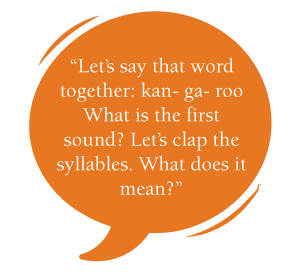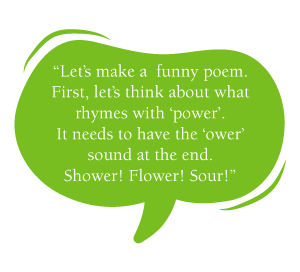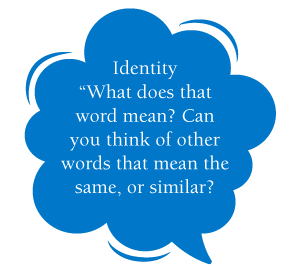If you have worked with children with speech sound difficulties (perhaps using our Speech Link package) you will be familiar with how children develop sounds. These occur in a set pattern, with most sounds being in place by the time a child is 8 years old.
Some of the common patterns we see, when children change sounds within words, are predictable. For example, they may change every ‘k’ sound to a ‘t’ sound. Cat will become ‘tat’ and car will become ‘tar’. Children’s speech sound systems mature with age, but some children might need extra help to learn to listen for and say these sound differences. There are also children who make inconsistent errors and may need a different approach to support their speech sound development.
Many children start their reception year/P1 with unclear speech. At the age of 4 or 5, they still have sounds to learn and include in their talking. Usually, rapid progress occurs in the first few years at primary school, because of the focus on phonological awareness work in the classroom, that is: developing skills in listening, sound segmentation and rhyming. Children learn how to ‘play’ with sounds – to change them around, to split them up and to make up funny new rhyming words. Being able to listen for the sounds in words is also a crucial skill for learning new vocabulary. When we learn and store a new word, we need to remember both its meaning and the sounds that are in the word. This helps us to remember and to retrieve the word when we need it.
But what about those children who have all their speech sounds intact, but have some words that are produced incorrectly? These words can be understood within the context of the conversation, but you can tell that they have not quite understood the meaning or the sounds within them.
Welcome to ‘fuzzy phonological representations’ – technically, this occurs when the child’s mental representation of the sounds and combinations of sounds in a word is not fixed. Simply – the word is stored incorrectly.
These children will say words, often with the correct sounds, but in the wrong sound sequence. They may call vegetables “venchtables”, a kangaroo might be a “kangareen” and spaghetti might be “persghetti”.
These children may have acquired all the target speech sounds for their age, but are still making errors, because they don’t have the firm foundation of phonological awareness, to understand the sound components in the words.
Fuzzy phonological representations are a good indicator that a child does not have the firm foundations that are needed for their reading, writing and vocabulary to be optimised and can be a symptom of an underlying gap.
4 Top Tips
So, what can teaching and support staff do to help children with fuzzy phonological representations?
- Revise sounds and meanings. When teaching or talking about a new word, make sure that you talk about the sound components (i.e., the first and last sounds and the syllables) as well as the meaning of the word. This will help with storing, categorisation, and retrieval.

- Revisit phonological awareness activities, even if the child has already done these in the past. Syllable clapping, rhyming and segmentation activities will help the child learn to listen for sounds and play with the parts of words. Within Infant Language Link, you will find lots of these games and activities in the Listening Groups. Speech Link includes Classroom Listening Games.

- Make links between groups of words, to help children store and retrieve information.

- Model the correct word, using segmentation and reinforcing the sounds. This can be done gently and without the need for the child to feel that they have been ‘corrected’.
Listen out for children who use fuzzy phonological representations in your classroom and think about what strategies you can introduce to help them to build firm links between words, their sounds and their meaning.
Please login to view this content
Login